|

On eBay Now...
2 1868 NY Times headline newspapers w PRESIDENT ANDREW JOHNSON IMPEACHMENT TRIAL For Sale
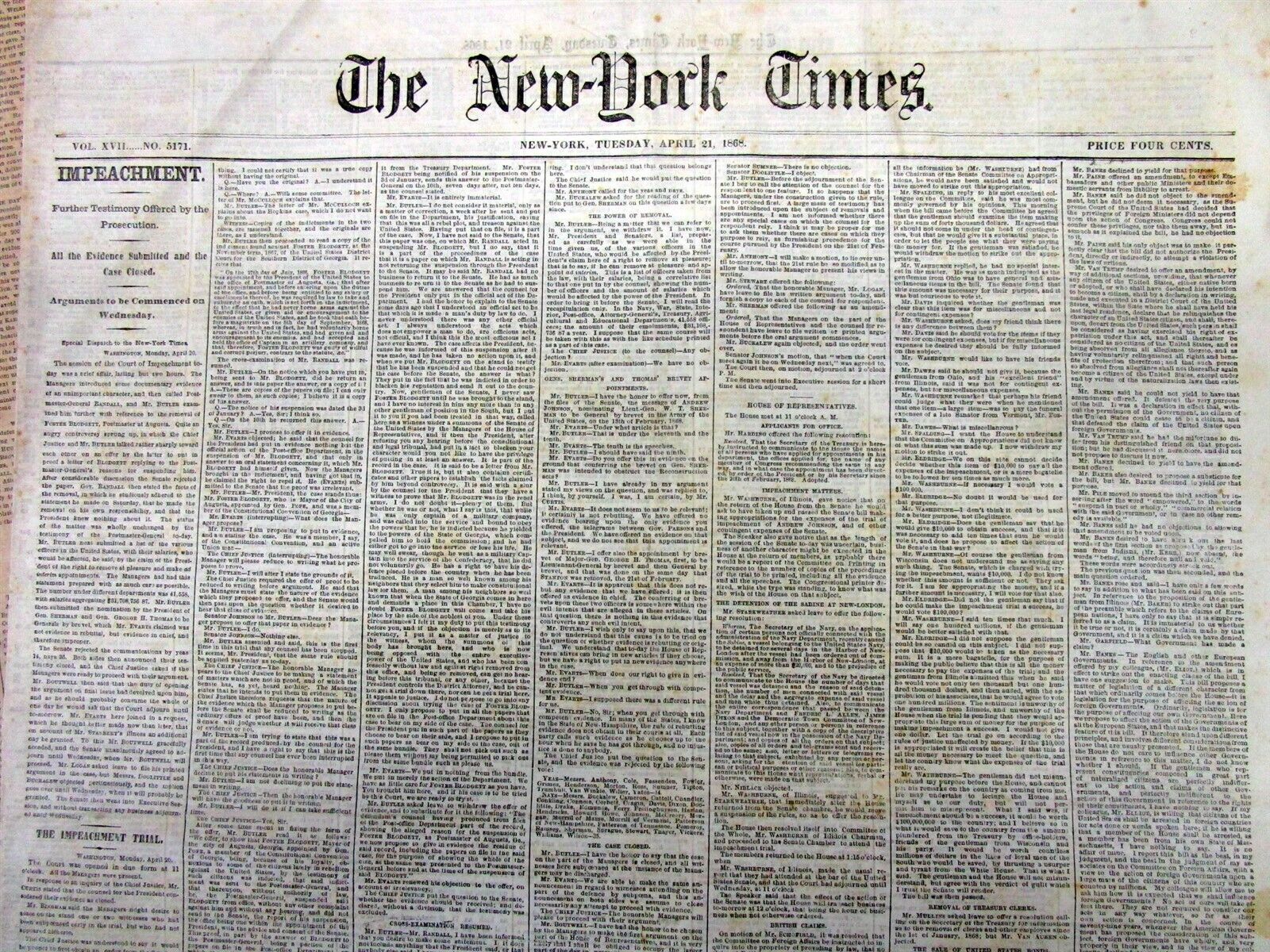
When you click on links to various merchants on this site and make a purchase, this can result in this site earning a commission. Affiliate programs and affiliations include, but are not limited to, the eBay Partner Network.

2 1868 NY Times headline newspapers w PRESIDENT ANDREW JOHNSON IMPEACHMENT TRIAL:
$38.00
2 1868 NY Times headline newspapers w PRESIDENT ANDREW JOHNSON IMPEACHMENT TRIAL
2 1868 NY Times headline newspapers with coverage of THE IMPEACHMENT TRIAL of PRESIDENT ANDREW JOHNSON- inv # 6A-331 Please visit our store for THOUSANDS MORE HISTORICAL NEWSPAPERS for SALE or at sale SEE PHOTO(s) - Two (2) COMPLETE ORIGINALNEWSPAPERs,theNY Times datedApril 2 and 21, 1868. These 2original newspapers contain prominent front page \"stacked\" headlines and very long detailed coverage of the PRESIDENT ANDREW JOHNSON IMPEACHMENT TRIAL. During the years immediately following the Civil War, President Andrew Johnson clashed repeatedly with the Republican-controlled Congress over reconstruction of the defeated South. Johnson vetoed legislation that Congress passed to protect the rights of those who had been freed from slavery. This clash culminated in the House of Representatives voting, on February 24, 1868, to impeach the president. On March 5, the trial began in the Senate, where Republicans held more seats than the two-thirds majority required to remove Johnson from office. When the trial concluded on May 16, however, the president had won acquittal, not because a majority of senators supported his policies but because a sufficient minority wished to protect the office of the president and preserve the constitutional balance of powers.
Born into poverty in North Carolina in 1808, as a young boy Andrew Johnson became apprentice to a tailor. He had no formal schooling, but through the sheer force of will became a self-educated man. While still in his teens, Johnson moved with his family to Tennessee, settled in Greeneville, and married a shoemaker\'s daughter named Eliza McCardle. Aiding Johnson in his self-education, Eliza helped to improve his social status and political opportunities.
Andrew Johnson may have lacked a formal education, but he possessed an innate talent for debate and oratory. His political career began when he was elected alderman of Greeneville in 1829, and five years later he became the small town\'s mayor. In 1835 he joined the Tennessee state legislature, only to lose reelection two years later. He returned to state politics in 1839, moved to the state senate in 1841, and was elected to the U.S. House of Representatives in 1843. Johnson\'s humble beginnings and populist style endeared him to the working-class poor but put him at odds with the wealthy landowners who controlled state politics. In 1853 his opponents gerrymandered him out of office. He retaliated by being elected governor—twice. By 1857 Johnson had gained enough support in the state legislature to be elected to the U.S. Senate.
Johnson proved to be an independent thinker. This was most evident following the 1860 election of Abraham Lincoln as president of the United States, when Southern states began to secede. While the secession convention met in Charleston, South Carolina, Johnson addressed the Senate and proclaimed his allegiance to the Union. Tennessee seceded, but Johnson remained in Washington. In March of 1862, President Lincoln rewarded Johnson\'s loyalty with appointment as military governor of Tennessee. When Lincoln sought a second presidential term in 1864 and needed the support of \"Union Democrats,\" he chose Johnson as his running mate. Johnson became vice president on March 4, 1865. Forty-two days later, he was president of the United States.
The initial response to a Johnson presidency was optimistic. Even the so-called Radical Republicans, who would pursue impeachment proceedings three years later, supported the new president. \"By the Gods,\" proclaimed Senator Ben Wade of Ohio, \"there will be no trouble now in running this government.\" Such good relations quickly soured, however, as Johnson\'s views on Reconstruction surfaced. Within weeks, Johnson opposed political rights for freedmen and called for a lenient reconstruction policy, including pardoning former Confederate leaders. The president looked for every opportunity to block action by the Radical Republicans. He had no interest in compromise. When Johnson vetoed the Freedmen\'s Bureau bill in February of 1866, he broke the final ties with his Republican opponents in Congress. They responded with the Fourteenth and Fifteenth Amendments to the Constitution, promising political rights to African Americans. In March of 1867 they also passed, over Johnson\'s presidential veto, the Tenure of Office Act which was designed to limit the president\'s ability to shape his cabinet by requiring that not only appointments but also dismissals be approved by the Senate.
By mid-1867, Johnson\'s enemies in Congress were repeatedly promoting impeachment. The precipitant event that resulted in a third and successful impeachment action was the firing of Secretary of War Edwin M. Stanton, a Lincoln appointee and ally of the Radical Republicans in Congress. Stanton had strongly opposed Johnson\'s Reconstruction policies and the president hoped to replace him with Ulysses S. Grant, whom Johnson believed to be more in line with his own political thinking. In August of 1867, while Congress was in recess, Johnson suspended Stanton and appointed Grant as secretary of war ad interim. When the Senate opposed Johnson\'s actions and reinstated Stanton in the fall, Grant resigned, fearing punitive action and possible consequences for his own presidential ambitions. Furious with his congressional opponents, Johnson fired Stanton and informed Congress of this action, then named Major General Lorenzo Thomas, a long-time foe of Stanton, as interim secretary. Stanton promptly had Thomas arrested for illegally seizing his office.
This musical chair debacle amounted to a presidential challenge to the constitutionality of the Tenure of Office Act. In response, having again reinstated Stanton to office, Radical Republicans in the House of Representatives, backed by key allies in the Senate, pursued impeachment.
Led by an aging and ailing Thaddeus Stevens, the Joint Committee on Reconstruction rapidly drafted a resolution of impeachment, which passed the House on February 24, 1868, by a vote of 126 to 47. Immediately, the House proceeded to establish an impeachment committee, appoint managers, and draft articles of impeachment.
The committee quickly produced charges that eventually became eleven articles of impeachment. Some of the charges were petty, but most centered on the president\'s alleged violation of the Tenure of Office Act. Article 1 stated that Johnson ordered Stanton removed with the intent to violate the act. Articles 2, 3 and 8 alleged that the appointment of Thomas, to replace Stanton, without the advice and consent of the Senate was a further violation of the Constitution. Articles 4 through 7 accused Johnson of conspiring with Thomas to remove Stanton, citing such conspiracy as a \"high crime in office,\" thus illegally depriving Stanton of his rightful position. The 8th article charged Johnson with conspiring to deprive Stanton of his rightful possessions. Article 9 accused Johnson of diverting orders and instructions related to military operations through the general of the army, bypassing Secretary Stanton. Another article, proposed by Massachusetts representative Benjamin Butler, charged Johnson with making speeches \"with a loud voice, certain intemperate, inflammatory, and scandalous harangues\" with the intent to disgrace Congress. This article was initially rejected, but later adopted as Article 10. The final article was championed by Thaddeus Stevens, accusing Johnson of declaring the 39th Congress unconstitutional, since it was a Congress of only part of the states, and therefore did not have legislative powers nor the power to propose constitutional amendments. This, argued Stevens, placed Johnson in violation of his presidential oath requiring him to \"take care that the laws be faithfully executed.\"
On March 2, 1868, the House approved the first nine articles of impeachment with the final two articles approved the following day. Amidst tremendous public attention and press coverage, the case moved to the Senate.
Quickly, the Senate debated and adopted an updated set of 25 impeachment rules, setting the stage for the first presidential impeachment trial in U.S. history. With Chief Justice Salmon Chase presiding, the trial began on March 5, 1868. On the advice of counsel, the president did not appear at the trial, although he did agree to a number of press interviews during the trial process.
Leading the president\'s defense team was Attorney General Henry Stanbery, who resigned his post to devote all of his attention to the trial. Four well-known and highly respected lawyers also donated their services, including William M. Evarts of New York, Benjamin R. Curtis of Boston (best known for his dissenting opinion in the Dred Scott case), Judge Thomas A. R. Nelson, an old friend of Johnson\'s from Tennessee, and William S. Groesbeck of Ohio.
The defense presented a complicated argument, designed to raise doubt in the senators\' minds about Johnson\'s intent and to question the role of criminality in impeachable offenses. They argued that Johnson\'s actions had not violated the Tenure of Office Act. Since Stanton had been appointed by Lincoln, Johnson was not obligated to continue his service. Even if the senators accepted the act as constitutional, the defense team insisted, Johnson could not be impeached for a mistaken interpretation of the law. Furthermore, they claimed that Johnson\'s intent was to test the very constitutionality of the act before the Supreme Court, which he had a right to do. The president, they insisted, should not be convicted and removed from office for misconstruing his constitutional rights. On the issue of appointing Thomas as interim officer, the defense team noted that Johnson was attempting, by necessity, to keep the War Department staffed and operational. The president\'s action, they noted, had resulted in no public injury sufficiently grave to warrant removal from office.
The trial of the president, including testimony of 25 prosecution and 16 defense witnesses, became a public spectacle as well as a constitutional crisis. It gave the grand orators of the Senate a chance to dazzle the public with their speaking skills, and the trial was conducted mostly in open session before a packed gallery. During final deliberations on the 11 articles of impeachment, however, the Senate cleared the gallery and closed the doors.
Acknowledging the spectacular nature of the trial, the Senate opted to manage the overflow crowds by strictly controlling access to the visitors\' gallery through a ticket system. For each trial day, 1,000 tickets were printed, allowing admission for a single day. Social and political protocol dictated the distribution of tickets, with 40 going to the diplomatic corps, 20 to the president, 4 to each senator, 4 to the Chief Justice, and 2 to each representative, with the few remaining tickets to be distributed to the public. Members of Congress received hundreds of requests each day for the highly coveted tickets.
Sensational in every detail, the trial ended in a dramatic fashion. Johnson\'s fiercest opponents in the Senate maneuvered a vote on only 3 of the 11 articles of impeachment, believing those 3 offered the greatest chance to gain conviction. On May 16, 1868, in a dramatic call of the roll, 35 senators voted to convict the president of \"high crimes and misdemeanors,\" while 19 senators voted to acquit. A clear majority voted against the president, but the tally fell one vote short of the necessary two-thirds majority to convict. Ten days later, when the Senate voted on articles 2 and 3, the result was the same. Notable among the 19 senators who voted to acquit were seven \"Republican Recusants\" who defied their party to save the impeached president. \"I cannot agree to destroy the harmonious working of the Constitution,\" concluded recusant senator James Grimes of Iowa, \"for the sake of getting rid of an Unacceptable President.\"
Johnson served out his term as president, leaving office on March 4, 1869. In 1874 he ran a successful senatorial campaign and returned to Washington—to the very chamber where he had been tried and acquitted a few years earlier. He served just three months before his death on July 31, 1875. Good-Very good condition. This listing includes the2 complete entire original newspapers, NOT just a clipping or a page of them. STEPHEN A. GOLDMAN HISTORICAL NEWSPAPERS stands behind all of the items that we sell with a no questions asked, money back guarantee. Every item we sell is an original newspaper printed on the date indicated at the beginning of its description. U.S. buyers paypriority mail postage which includes waterproof plastic and a heavy cardboard flat to protect the purchased itemfrom damage in the mail. Uponrequest by the buyer, we can ship by USPS Media Mail to reduce postage cost; however, please be aware that USPS Media Mailcanbe very slow in its time of transit to the buyer.International postage is quoted when we are informed as to where the package is to be sent. We do combine postage (to reduce postage costs) for multiple purchases sent in the same package. We list thousands of rare newspapers with dates from 1570 through 2004 on each week. This is truly SIX CENTURIES OF HISTORY that YOU CAN OWN! Stephen A. Goldman Historical Newspapers has been in the business of buying and selling historical newspapers for over 50 years. Dr. Goldman is a consultant to the Freedom Forum Newseum and a member of the American Antiquarian Society. You can buy with confidence from us, knowing that we stand behind all of our historical items with a 100% money back guarantee. Let our 50+ years of experience work for YOU ! We have hundreds of thousands of historical newspapers (and their very early precursors) for sale.
Stephen A. Goldman Historical Newspapershas been in the business of buying and selling historical newspapers for over 50 years. We are located in the charming Maryland Eastern Shore town of OXFORD, Maryland.
Dr. Goldman is a consultant to the Freedom Forum Newseum and a member of the American Antiquarian Society. You can buy with confidence from us, knowing that we stand behind all of our historical items with a 100% money back guarantee. Let our 50+ years of experience work for YOU ! We have hundreds of thousands of historical newspapers (and their very early precursors) for sale.
We invite customer requestsforhistorical newspapers that are not yetlocated in our extensive listing ofitems. With an inventory of nearlya million historical newspapers (and their early precursors) we arelikely have just the one YOU are searching for.
WE ARE ALSO ACTIVE BUYERS OF HISTORICAL NEWSPAPERS, including large and small personal collections, bound volumes, significant individual issues, or deaccessions from libraries and historical societies. IF YOU WANT TO SELL, WE WANT TO BUY !!!
Powered by SixBit\'s eCommerce Solution

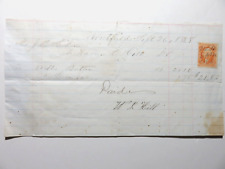
1868 2 Cent Int. Revenue Stamp Receipt $8.00
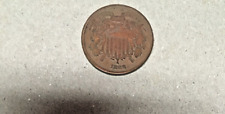
Two Cent copper coin 1868 ungraded Post Civil War $30.00
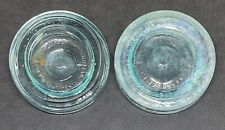
(2) 1868 ANTIQUE GLASS LIDS INSERT FRUIT JAR EMBOSSED PATD 56 61 62 64 68 NICE $14.99
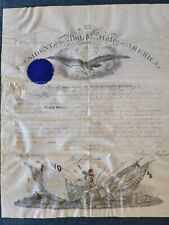
Andrew Johnson Presidential Military Commission July 2 1868 Robert H. Patterson $200.00
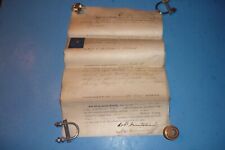
ACKNOWLEDGEMENTS OF DEEDS BY MARRIED WOMEN - 2 PART VELLUM DOCUMENT UK 1868 $16.95

Lot Of 2 Patent 1868 Ripley Single & Double Handle Oil Finger Lamps LOOK AS IS $34.95
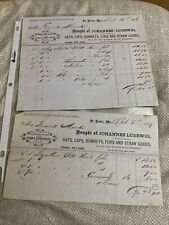
2 1868 / 1869 St. Louis MO Invoices: Johannes Ludewig- Furs & Deer Skin Dealer $49.13
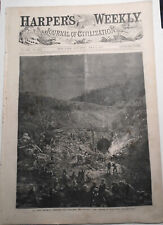
Harper's Weekly May 2, 1868 Sioux Ambush; Erie Railroad Disaster, Japanese Revo $44.00
|